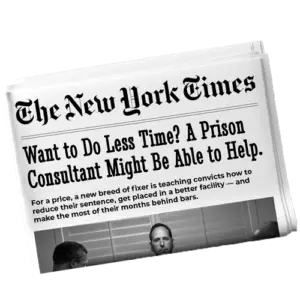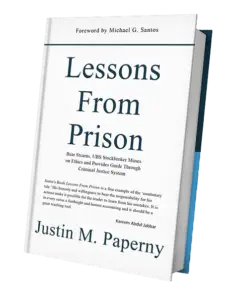If you are in a federal case, the government already controls the story. Your only chance to influence probation, prosecutors, and the judge is through the assets you create.
What Is a Sentencing Narrative?
A sentencing narrative is a written account, usually 8–12 pages, that covers:
- Plain acceptance of responsibility.
- The impact on victims, without excuses.
- What you’ve learned and changed since the crime.
- Specific steps to pay restitution and prevent repeat conduct.
Judges read the PSR (pre-sentence report) first. If your narrative isn’t in there, you’ve missed the chance to influence them. To learn more, watch out interview with Judge Bennett.
When I went through my own case, I stayed quiet. My co-defendant cooperated while I waited, thinking silence would help. That silence gave the government’s narrative full control. Years later, I watched other defendants who wrote credible narratives and placed them in the PSR. Judges referenced their work during hearings. The contrast was clear: silence weakens, evidence persuades.
Why a Release Plan Matters
A release plan proves to the court and probation that you are stable and low risk. It is not a wish list. It is a set of documents that show you have thought through life after sentencing.
Strong release plans include:
- Housing: verified addresses and backup options.
- Employment: job offers, supervisor contact, or a business plan.
- Restitution: budgets and receipts for payments already made.
- Service: logs of hours with verification.
- Support network: family commitments, mentors, and backup childcare.
Former Chief of Probation Chris Maloney explained that the PSR drives Bureau of Prisons and probation decisions. If you don’t provide your own material, probation fills the gaps. Those gaps usually favor the government.
Steps to Build and Implement Both
1. Draft the Narrative
Keep it under 12 pages. Accept responsibility without excuses. Avoid language that shifts blame. Judges quickly recognize empty apologies.
2. Prepare for the Probation Interview
Lead with a one-minute script that acknowledges guilt and introduces your documents. Bring receipts: restitution, housing verification, character letters and job offers. Let probation see why you are different than your out-of-character choices.
3. Create the Release Plan
Organize it into housing, work, restitution, treatment, service, and support. Anticipate both custody and non-custody outcomes. Judges notice defendants who prepare for every path.
4. Share With Counsel and Probation
Ask your lawyer to include the narrative in the PSR. If they resist, ask why. Judges like Mark Bennett have said they value early, defendant-submitted narratives. The goal is not to replace your lawyer’s strategy but to make sure your own voice is in the record.
5. Keep Updating
Do not stop once sentencing ends. Journals, program completions, and accountability logs matter during custody. Updates can also influence probation officers, who decide how supervision begins and ends.
Q&A: Common Concerns
Q: My lawyer said not to submit my narrative. What should I do?
Ask for the specific risks. If the concern is length, create a one-page summary with attachments. If the concern is timing, point to examples of judges praising early submissions.
Q: Can my spouse edit my narrative?
Yes. Just acknowledge that others assisted. Judges care about authenticity, not who typed the final draft.
Q: Should I bring my release plan directly to the judge?
No. Work through counsel. Judges expect submissions to come from your lawyer.
Q: What if I’m already sentenced?
Keep documenting. Journals, book reports, and service logs may support later motions, including compassionate release.
Case Example
One defendant built a full release plan six months before sentencing. He documented every restitution payment, logged service hours, and prepared verified housing and employment letters. His judge referenced those details during sentencing, ordered self-surrender, and granted a facility recommendation.
Another defendant waited until sentencing day to make a polished statement in court. Nothing was verifiable. The judge had no reason to consider it, and the statement was ignored. The difference came down to documented work versus last-minute words.
My Experience
When I went through the system, I failed to prepare. I embraced silence and outsourcing as a strategy. It didn’t work. My probation interview was short, and I gave them almost nothing to work with. My PSR reflected only the government’s version. That mistake followed me into sentencing and prison.
Since then, I’ve seen the opposite outcome. Defendants who prepare narratives and release plans—create assets—earn credibility. They don’t avoid sentencing, but they often receive benefits such as self-surrender, shorter custody, and placement in programs that matter. Judges and probation officers can only respond to what they see.
What if I don’t have money for restitution?
Make payments, even small ones, and show a schedule. Judges notice if someone is committed to making their victims whole.
Can service hours count inside prison?
Yes. Tutoring, mentoring, and education roles can all be logged and verified.
How long should the release plan be?
Five to ten pages with attachments. Enough to show stability, not enough to overwhelm.
If you want to build your own narrative and release plan, join our Tuesday webinar or schedule a personal call. Judges and probation respond to evidence—start documenting it today.
Justin Paperny



